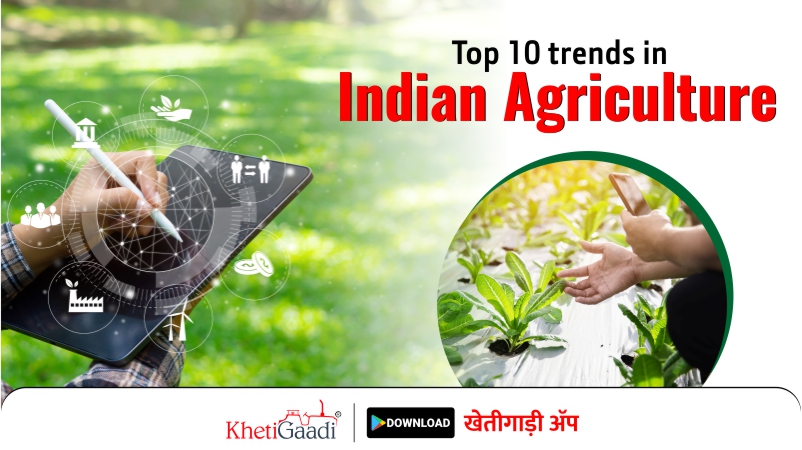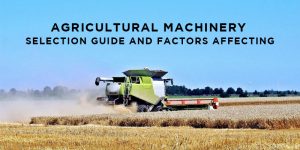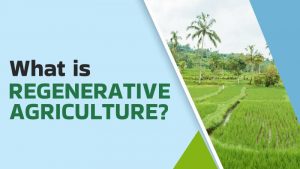Indian agriculture is increasing and accepting new technologies and new trends in the agriculture sector. These trends are helpful for the increase in production and successful farming in this era. Let’s have a look at the top 10 trends in Indian Agriculture.
Precision Agriculture
Precision farming, also known as precision agriculture, is a modern approach to farming that uses technology and data analysis to optimize crop yields and reduce waste. The goal of precision farming is to increase efficiency in agricultural practices by using data-driven techniques to make informed decisions about planting, harvesting, and other agricultural processes.
Precision farming techniques include using sensors, drones, GPS mapping, and data analytics to monitor crop health, soil moisture levels, and weather patterns. By collecting and analyzing this data, farmers can make more informed decisions about when to plant, how much fertilizer to use, and when to harvest their crops.
Precision farming has many benefits, including increased crop yields, reduced water and other resources use, and improved sustainability. It also has the potential to reduce the environmental impact of farming, by minimizing the use of pesticides and other chemicals.
Precision farming is an exciting development in agriculture that has the potential to revolutionize the way we grow and produce food.
Vertical Farming
Vertical farming is a method of growing crops in vertically stacked layers or structures, using controlled-environment agriculture (CEA) technology. This approach allows for highly efficient use of space, as crops are grown in vertically stacked layers or shelves, often in urban areas or indoors.
Vertical farming systems can incorporate various technologies, such as hydroponics, aeroponics, and aquaponics, to provide a controlled environment for plant growth, with factors such as temperature, humidity, light, and nutrients all carefully regulated.
One of the key advantages of vertical farming is that it allows for year-round crop production, regardless of weather conditions. It also minimizes the use of pesticides and herbicides, as the controlled environment reduces the risk of pests and diseases. Additionally, vertical farming can reduce the environmental impact of traditional farming, as it typically requires less water and fertilizer, and eliminates the need for large tracts of land.
However, there are also challenges associated with vertical farming, including high startup costs, energy consumption, and the need for specialized skills and knowledge to operate the technology. Despite these challenges, vertical farming is becoming an increasingly popular method of food production, particularly in densely populated urban areas, where access to fresh produce can be limited.
Sustainable Farming
Sustainable farming is an agricultural method that emphasizes long-term productivity, environmental conservation, and social responsibility. It involves using techniques that minimize negative impacts on the environment, such as reducing the use of pesticides and synthetic fertilizers and promoting the use of renewable resources and conservation practices. The goal of sustainable farming is to produce healthy food while preserving natural resources and ensuring the economic viability of farming communities.
Some examples of sustainable farming practices include:
Crop rotation: This involves alternating crops in a field to improve soil health and reduce pest and disease problems.
Conservation tillage: This involves leaving crop residues on the soil surface to reduce soil erosion and improve soil health.
Integrated pest management (IPM): This involves using a combination of biological, cultural, and chemical control methods to manage pests and reduce the use of pesticides.
Cover cropping: This involves planting crops that cover the soil between main crops to improve soil health, prevent erosion, and provide a habitat for beneficial insects.
Agroforestry: This involves growing trees and crops together to improve soil health, provide shade and shelter, and increase biodiversity.
Water conservation: This involves using efficient irrigation systems and water-saving techniques to reduce water use and conserve this precious resource.
Sustainable farming is becoming increasingly important as the world faces challenges such as climate change, loss of biodiversity, and soil degradation. By adopting sustainable farming practices, farmers can help protect the environment, produce healthy food, and contribute to the economic and social well-being of their communities.
Organic Farming
Organic farming is a type of agricultural production that involves growing crops or raising livestock without the use of synthetic fertilizers, pesticides, or genetically modified organisms (GMOs). Instead, organic farmers rely on natural methods such as crop rotation, composting, and integrated pest management to maintain soil fertility, prevent pest infestations, and promote the health of crops and animals.
Organic farming also emphasizes the use of renewable resources and conservation of biodiversity and often involves the use of practices such as cover cropping, conservation tillage, and the use of natural predators to control pests.
Organic farming is often seen as a more sustainable and environmentally friendly alternative to conventional farming methods, as it typically involves less use of fossil fuels and synthetic inputs, and may have a lower impact on soil and water quality. However, organic farming can also be more labor-intensive and may have lower yields than conventional farming methods, which can make it less economically viable for some farmers.
Despite these challenges, organic farming has become increasingly popular in many parts of the world, driven by growing consumer demand for organic products and a desire to promote sustainable agriculture and protect the environment.
Urban Farming
Growing food and raising animals in urban settings, like cities and towns, is known as urban farming. There are many different types of urban farming, ranging from small community gardens to larger commercial enterprises.
There are many benefits to urban farming, including increased access to fresh, healthy food for urban residents, improved community engagement and social cohesion, and the potential to reduce the carbon footprint of food production by reducing the distance that food must travel from farm to table.
Urban farming can take many different forms, including rooftop gardens, container gardens, and aquaponics systems. Some urban farmers also raise animals such as chickens, bees, or rabbits for their eggs, honey, or meat.
Urban farming is an important trend that is helping to create more sustainable, resilient, and equitable food systems in cities around the world.
Aquaponics
Aquaponics is a sustainable farming system that combines aquaculture (raising fish) and hydroponics (growing plants without soil) in a closed-loop ecosystem. In an aquaponic system, fish waste provides the nutrients for the plants to grow, while the plants purify the water for the fish. Plants and fish depend on each other for survival, creating a mutually beneficial relationship.
The basic components of an aquaponic system include a fish tank, a grow bed for the plants, and a pump to circulate the water between the two. The system can be set up in a variety of ways, from small-scale backyard setups to large commercial operations.
Aquaponics is considered a sustainable method of farming because it uses less water and land than traditional farming methods and eliminates the need for chemical fertilizers and pesticides. It also produces both fish and vegetables, providing a diverse source of food. However, it does require careful monitoring and management to ensure the health of the fish and plants.
Biotechnology
Biotechnology refers to the use of living organisms, cells, and biological processes to develop new technologies and products for a variety of fields, including medicine, agriculture, and industry. It involves the manipulation of biological systems for various applications, such as producing drugs, developing genetically modified organisms, or creating new materials.
Biotechnology has rapidly advanced over the past few decades and has revolutionized many aspects of our lives. For example, biotechnology has led to the development of new vaccines, diagnostic tests, and treatments for diseases. It has also been used to improve crop yields and food production, develop new biofuels, and create new materials with unique properties.
Some of the key techniques used in biotechnology include genetic engineering, tissue engineering, fermentation, and cloning. These techniques are often used in combination with each other to achieve specific goals.
Biotechnology has the potential to significantly improve our quality of life by developing new solutions to some of the world’s most pressing challenges, such as healthcare, food security, and environmental sustainability.
Robotics in Agriculture
Robotics in agriculture, also known as agri-robotics, is the use of robots or autonomous systems to perform agricultural tasks. These tasks can include planting, harvesting, weeding, monitoring crops, and managing livestock. The use of robotics in agriculture has the potential to increase efficiency, reduce labor costs, and improve crop yields while minimizing the negative impact on the environment.
There are various types of robots used in agriculture, including aerial drones, ground-based robots, and autonomous tractors. Aerial drones can be used to collect data on crop health and growth patterns, while ground-based robots can perform tasks such as planting, weeding, and harvesting. Autonomous tractors are also becoming increasingly popular for tasks such as tilling, planting, and spraying.
One of the main benefits of robotics in agriculture is the ability to collect and analyze data more efficiently. By using sensors and imaging technologies, robots can collect data on crop health and growth patterns, which can then be used to optimize crop management practices. This can lead to increased yields and reduced use of resources such as water and fertilizer.
Robotic systems can also help to reduce the use of pesticides and other harmful chemicals. By using precision technology, robots can apply chemicals only where needed, reducing waste and minimizing negative effects on the environment. Additionally, robots can help to reduce labor costs by performing tasks that would otherwise require human labor, particularly in areas with labor shortages.
Big Data in Agriculture
Data is increasingly becoming an important component in agriculture. Farmers and other agriculture stakeholders can collect, store, analyze, and use data to make better decisions that can increase crop yields, improve food quality, reduce production costs, and manage risk more effectively.
Here are some examples of how data is used in agriculture:
Precision agriculture: Farmers can use data to make precise decisions about crop management. This can involve using sensors and drones to collect data on soil moisture, nutrient levels, and other factors that affect crop growth. Use the data to determine the optimal time for planting, irrigation, and fertilization.
Crop monitoring: Data can be used to monitor crops and detect problems such as pests, diseases, and weather damage.
Supply chain management: Data can be used to track the movement of crops from farm to market. This can help ensure that crops are delivered on time and in good condition, reducing waste and improving profitability.
Weather forecasting: Accurate weather forecasts are essential for effective crop management. Utilize data from weather stations, satellites, and other sources to offer farmers up-to-date information on temperature, humidity, rainfall, and other weather factors.
Market analysis: Data can be used to analyze market trends and identify opportunities for growth. This can help farmers make informed decisions about which crops to grow, how much to produce, and where to sell them.
Data is an essential tool for agriculture, helping farmers to increase efficiency, reduce costs, and improve crop yields
Hydroponics
Hydroponics is a method of growing plants without soil, using a nutrient-rich solution instead. Deliver this solution to the plants through various methods, including a nutrient film, deep water culture, or aeroponics system.
Hydroponics has a number of advantages over traditional soil-based growing methods. For example, it allows for greater control over the plant’s environment, including the pH of the nutrient solution and the temperature and humidity of the air. This can result in faster growth rates, higher yields, and better quality produce.
Growers can use hydroponics to cultivate a diverse range of plants, including vegetables, herbs, and even fruit trees. It is also becoming increasingly popular for indoor gardening, as it allows people to grow plants in limited space and without access to outdoor soil.
However, hydroponics can also be more complex and expensive than traditional gardening methods, as it requires specialized equipment and a greater understanding of plant nutrition and environmental factors.
Get information related to tractors, tractor videos, and tractor games; and visit the Khetiguru mobile application for farming-related updates.




